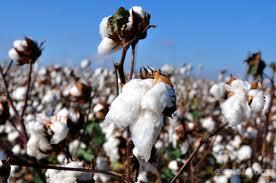I want to start out by saying that proper equipment is very important in enjoying a winter outdoor sport, but, proper layering and dress is vital. This blog titled “Proper Layering” will be broken down into many parts; materials, head protection, foot protection, hand protection and core protection. This break down was created to show the importance of each bodily region respectively.
Cotton…

should be left at home; it has no place in the back-country during the colder months. During the warmer months where the temperatures don’t drop below 60, maybe, and that is a very huge MAYBE!! Sure cotton is comfortable, soft, and inexpensive and the options for style are grander. However, once cotton gets wet, it stays wet, then it freezes, then you freeze. The saying is “COTTON KILLS,” and that is as true as the sky is blue. If camping in winter and your cotton gets wet, you will wake up the next morning with blocks of ice that you have to wear. Cotton helps accelerate hypothermia and in turn makes you body work harder than it needs to stay warm.
Wool…
stays warm when wet, even saturated. Wool also dries quicker under the right environment. Wool is also commonly thought of as being heavy to wear, rough to the touch, used by hunters and your dear ole’ granddad. This is not entirely true, but yet they knew the benefits of it. Yes wool has been around and used in the out of doors for centuries, it was heavy, it was rough when on the bare skin and it was not terribly attractive. They still do make those flannel looking, heavy, rough jackets and pants and they are still worn to this day, because it works. You may not see it on hikers, skiers, ice climbers or mountaineers anymore – that’s mainly because of the wondrous alternative of merino wool.
Merino wool is much lighter and most importantly soft to the touch. However, if you have an allergy to wool, merino wool still may not be a viable substitute. Merino wool is produced from merino sheep, which have softer wool. This type of wool was originally produced Spain, but over the decades has been popping up all over the world. New Zealand and Australia are two largest producers of merino wool.
Merino wool helps regulates body temperature very well especially as a baselayer. Merino wool comes in several weights for additional protection. While providing excellent warmth it does not overheat the user. Merino wool is excellent for wicking moisture away from the skin, keeping your skin dryer.
All wool contains what is called lanolin which is an antibacterial substance which reduces the unpleasant stench that many other clothing materials seem to produce once sweat is introduced to them. Much of the wool clothing can be worn for days on end without the worry of offending your neighbor.
Polyester/synthetic materials/fleece…
are the most popular of the materials for outdoor clothing. This is mainly due to affordability, function, weight, and their quick drying properties. The largest downfall of synthetic materials is it is essentially plastic and petroleum products. The other downfall is the stink you can get from the materials. When worn frequently your sweat gets, what you might consider, imbedded into the material where bacteria goes to work. This causes the clothing to obtain and hold onto odors which are very difficult to wash out.
Down…
is a warmth layer which is not friends with moisture. Down is simply a feather layer under the outer feathers of ducks and geese. They small soft weathers are then harvested to fill outwear, sleeping bags and other products. There are many different types of down from duck down to goose down and many different down categories; 200, 600, 900 - the higher the number the better the down and the more expensive the piece. Down has excellent loft, the loftier the piece, the warmer the piece will be.
While your down jacket is cozy and warm, be sure to keep it dry. Once the down is wet, it loses all warmth ratings and essentially becomes heavy and useless. Do not hike in your down jacket, it is too warm and sweat will soak into the fibers and the moisture as I mentioned is not down’s best friend. Use the down piece as a layer for above tree line, at camp or for extended idle time.
Primaloft…
is essentially a man-made down, with many of the same qualities. However, it retains its warmth when wet and is much less bulky. It was initially developed for the military as a warmth layer and for gear. When wet it retains around 95% of its warmth values and retains its loft, making it an excellent product for outdoor activities.
Waterproof/Breathable Shell…
is the outer portion of your layering system. This layer is a waterproof material and should be uninsulated. This layer is also windproof but does not add a layer of warmth. The shell traps heat, making you feel as though you are warmer. Essentially you are, because you are not losing your body heat as rapidly. There are many different companies making waterproofing for shell layers, but Gore-tex is possibly the most popular and essentially the most expensive.
That is pretty much the materials I will be covering in each of the following layering blogs. Some areas of the body require more attention than others and have different pieces of gear that are not covered in the above materials section, such as goggles, gaiters, boot material’s, etc… For more information or to try out different layering options be sure to check out a local gear shop or outfitters for details and clothing. Oh, and don’t forget to check back to see what’s next, when I cover the head, the feet, the hands and the core.







